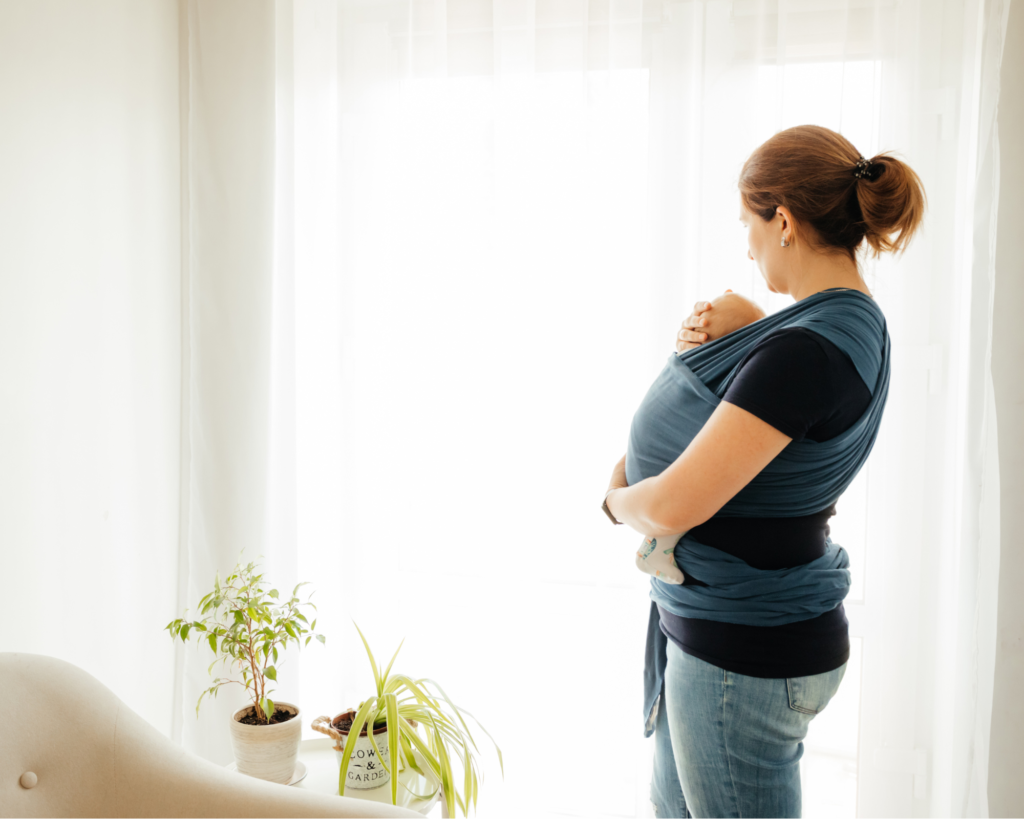
Contact Naps: Good, Bad, or Somewhere in Between?
First, what are contact naps?
Contact naps are simply naps your baby takes while laying on you, with you, or while being carried or worn in some sort of baby carrier like a ring sling or wrap. If your baby is napping on or against your body, it’s a contact nap!
Are contact naps good, bad, or somewhere in between?
I don’t think there’s anything sweeter or more snuggly than a peacefully sleeping baby! Contact naps are special, benefit baby (and parents), and aren’t a bad thing at all. However, as a mom I know how difficult it can be if contact naps are the only way your baby will nap. I’ve often thought, if only I had another set of arms. The truth is though, as parents if we had another set of arms, we would fill them and wish we had yet another set.
What are the benefits of contact naps?
Research has shown that being holding with you baby can:
- increasing bonding
- increases the hormone oxytocin (the hormone responsible for love)
- help reduce the stress hormone cortisol
- help you learn your baby’s hunger and sleepy cues quicker
But holding and touching your baby can happen while they’re awake or for contact naps when it’s mutually desirable. The benefits still exist!
Is it okay if I let my baby contact nap for every nap?
Every nap? I always tell families that there is no right or wrong way to parent your babies. If it’s working for you and it’s something you want to continue doing, do it. If it’s not working or you don’t for see being able to continue doing what you’re doing, then it’s time to look at other options or ways of doing things. Same applies here. Also, I am a big believer in “all things in moderation”.
My baby won’t sleep unless it’s a contact nap. How do I stop the contact napping?
When you’re ready to stop contact naps, limit contact naps, or just do not wish to get started contact napping at all here are some things that can help you:
Make your baby’s room conducive to sleep!
- A safe sleep space is first, always
- A dark sleep space (by 3-4 months this will begin to become super important)
- A cool (68-72) sleep space (if it’s too warm or too cool adjust the thermostat if necessary and check your baby’s clothing, swaddle, etc.)
- A white noise machine placed near, but not in the sleep space (loud enough to drown out background noise like dogs, phone conversations, doorbells, and other kids playing)
Practice naps in their crib!
Whether you have a baby who has been contact napping every nap since birth or you have a baby who has just started wanting to contact nap, practicing 1-2 naps a day in their crib will help get them use to their own sleep space. Start with a baby who is sleepy, but not over tired. Lay your baby down awake, but sleepy! It’s important to know that any time they spend napping in their crib is a win win! With more practice the naps in their crib will increase in duration.
Watch your baby’s wake windows!
Wake windows are simply the time between one nap time and the next nap time. Nap time is measured from the time you lay your baby down for a nap to the time you pick them back up. You want to time these wake windows right and that can take bit of practice. You want a balance. Overtired babies fight sleep so hard it’s nearly impossible for them to go down easy. Babies who aren’t tired enough to fall asleep and stay asleep are also restless. Restful naps begin to fall into place when you learn your baby’s early signs of sleepiness and get them to their sleep space relatively quickly. Same goes for waking them up on time!
Independent night sleep leads to independent day sleep!
If you are like most parents, you’ll be happy to hear that consolidated sleep almost always happens at night before it happens at naps! Yay! That can feel like a double edge sword, but truly, once your little one begins to get longer, more consistent stretches of sleep at night in their crib, naps usually fall right into place.
Safety should always be considered first!
The AAP does not recommend the use of infant carriers or infant slings (babywearing) for routine sleep. They also don’t promote co-sleeping (the sharing of a sleep surface), but they do acknowledge that many (as many as 75%) of mothers admit to having fallen asleep with their babies either on accident or on purpose at some point in the first year of their child’s life. That’s a HUGE percentage.
At The Jacksonville Baby Company, we want to provide contact naps in the safest way possible, every time!
As a Postpartum and Infant Care Specialist this is something we are happy to go over with families because we know that contact naps will happen now and again and knowing how to make that happen in the safest way possible is important!
Our team is there day and night for families to help them help their babies achieve independent sleep so they can have the freedom to pick and choose when they want to enjoy contact naps.
Contact naps may be all your baby knows, be patient!
With a safe space conducive to sleep, some practice, and time and consistency your baby will begin to sleep independently more frequently and contact nap less and believe it or not they may begin to prefer it!